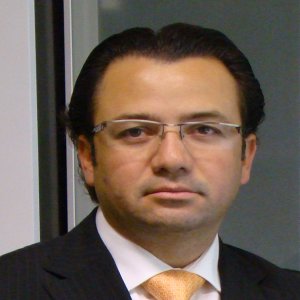Production Stimulation Strategies in the Chicontepec Basin

STORY INLINE POST
Swabbing is a technique used in producing wells of pulling fluid from the wellbore using a wire rope and cup assembly. A shut-off valve on the well, also known as a swabbing valve, allows the procedure to take place and helps to improve the flow of reservoir hydrocarbons by reducing pressure in the wellbore.
Juan Manuel Barajas Ichante, General Director of Petroswab, a Mexican company specialized in swabbing, explains that, for Pemex, swabbing is a simple, low-cost, practical and fast technology that allows them to increase production rates at their wells. From Poza Rica, the company serves Pemex’s wells at Chicontepec. Through its use of eight swabbing teams, the company services Pemex’s wells at Agua Fría, Coapechaca, Tajín, Cerro Viejo and Humapa. Currently, the company is adding about 400 bbl/day to Pemex’s current production at Chicontepec at a lower cost than other production enhancement techniques. The company is focused on convincing Pemex to engage more swabbing teams in the region to further enhance production.
These onshore fields, once the only source of Pemex’s production, were neglected for many years after the discovery of the Cantarell complex in shallow waters in the Gulf of Mexico. However, now that shallow water projects are no longer yielding the results they once did, Pemex is once again looking at onshore fields to boost production. In a March 2012 investor presentation, Pemex indicated that production at Chicontepec will increase by between 15,000 and 20,000 incremental bbl/day by 2014. However, the field has a complex geology, and is currently investigating techniques in order to bring a major production increase to the area – in the longer term, the NOC hopes to increase production by a factor of 10.
Until technologies are proven and fully implemented at Chicontepec, Pemex will look to increase its production levels through a portfolio of technologies including swabbing, which are relatively inexpensive and reliable. Any incremental increase in production will go some way towards helping the company reach its production targets.
Most of Petroswab’s business in Mexico today comes through contracts with Pemex; Barajas Ichante explains that only a very small percentage of their swabbing activities are conducted for international oilfield service companies, which would rather hire more wide-reaching services. Pemex however, currently sees the benefit of contracting swabbing specialists in order to ensure that the technique brings as many barrels of production as possible: something a generalist service provider might not have as a focus.
The company started its collaboration with Pemex in its northern onshore region, but Barajas Ichante explains that there is potential to find swabbing work in the south as well. Indeed, the company has established a second base of operations in Villahermosa to complement their Poza Rica headquarters, and operates four swabbing teams out of the southern base at the Samaria, Comalcalco, Agua Dulce, Cinco Presidentes and Reforma fields. The test well in Pemex’s southern fields was a success, with production increased by 400 bbl/day, and led to a long-term contract to provide swabbing services. Petroswab aims to have twenty swabbing units operating from the Villahermosa base in three years.
Swabbing can also yield results in offshore fields. As it is a mechanical technique, it is often much more cost-effective to use swabbing than other production-enhancing techniques, which require more items to be shipped to and installed on a platform.
One issue for swabbing in Mexico is the introduction of automation systems at well locations, which reduces the need for swabbing and also makes the process more complicated, as wells are often controlled from remote locations. However, Barajas Ichante is optimistic about the continued use of swabbing in Mexican onshore fields. “It’s nothing that we have to worry about for the moment. Swabbing will stick around for a while. The truth is that Pemex is very slow, so I don’t think it’s something we have to worry about now. There are 7,000 wells in Chicontepec, so swabbing will continue for some time to come.”





















